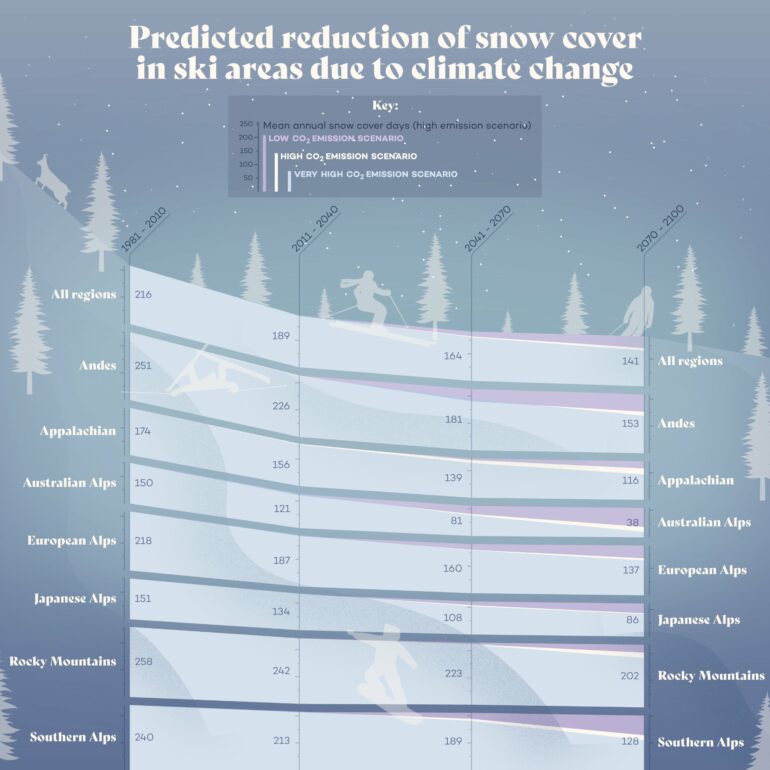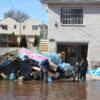Annual snow cover days in all major skiing regions are projected to decrease dramatically as a result of climate change, with one in eight ski areas losing all natural snow cover this century under high emission scenarios. These results are published in a new study in the open-access journal PLOS ONE by Veronika Mitterwallner from the University of Bayreuth, Germany and colleagues.
Popular skiing destinations experience the impacts of climate change, which include reduced snowfall in regions around the world. Despite the social, economic, and ecological significance of the skiing industry, little research exists on how ski area distributions are affected by climate change globally. Existing studies are small-scale and focused on Europe, North America, and Australia.
Mitterwallner and colleagues examined the impact of climate change on annual natural snow cover in seven major skiing regions: the European Alps, Andes Mountains, Appalachian Mountains, Australian Alps, Japanese Alps, Southern Alps (located in New Zealand), and Rocky Mountains.
The researchers identified specific skiing locations within these seven regions using OpenStreetMap. As the largest global ski market, the European Alps accounted for 69% of these areas. The researchers also used the public climate database CHELSA, enabling them to predict annual snow cover days for each ski area for 2011–2040, 2041–2070, and 2071–2100 under low, high, and very high carbon emissions scenarios.
Under the high emissions scenario, 13% of ski areas are predicted to lose all natural snow cover by 2071–2100 relative to their historic baselines; 20% will lose more than half of their snow cover days per year. By 2071–2100, average annual snow cover days were predicted to decline most in the Australian Alps (78%) and Southern Alps (51%), followed by the Japanese Alps (50%), Andes (43%), European Alps (42%), and Appalachians (37%), with the Rocky Mountains predicted to experience the least decline at 23% relative to historic baselines.
The researchers state that diminishing snow cover may prompt ski resorts to move or expand into less populated areas, potentially threatening alpine plants and animals already under climate-induced strain. Resorts favoring faux snow may rely on “technical snowmaking” practices like artificial snow production, but regardless, the authors predict that the economic profitability of ski resorts will fall globally.
The authors add, “This study demonstrates significant future losses in natural snow cover of current ski areas worldwide, indicating spatial shifts of ski area distributions, potentially threatening high-elevation ecosystems.”
More information:
Global reduction of snow cover in ski areas under climate change, PLoS ONE (2024). DOI: 10.1371/journal.pone.0299735
Provided by
Public Library of Science
Citation:
The future is likely less skiable, thanks to climate change (2024, March 13)



